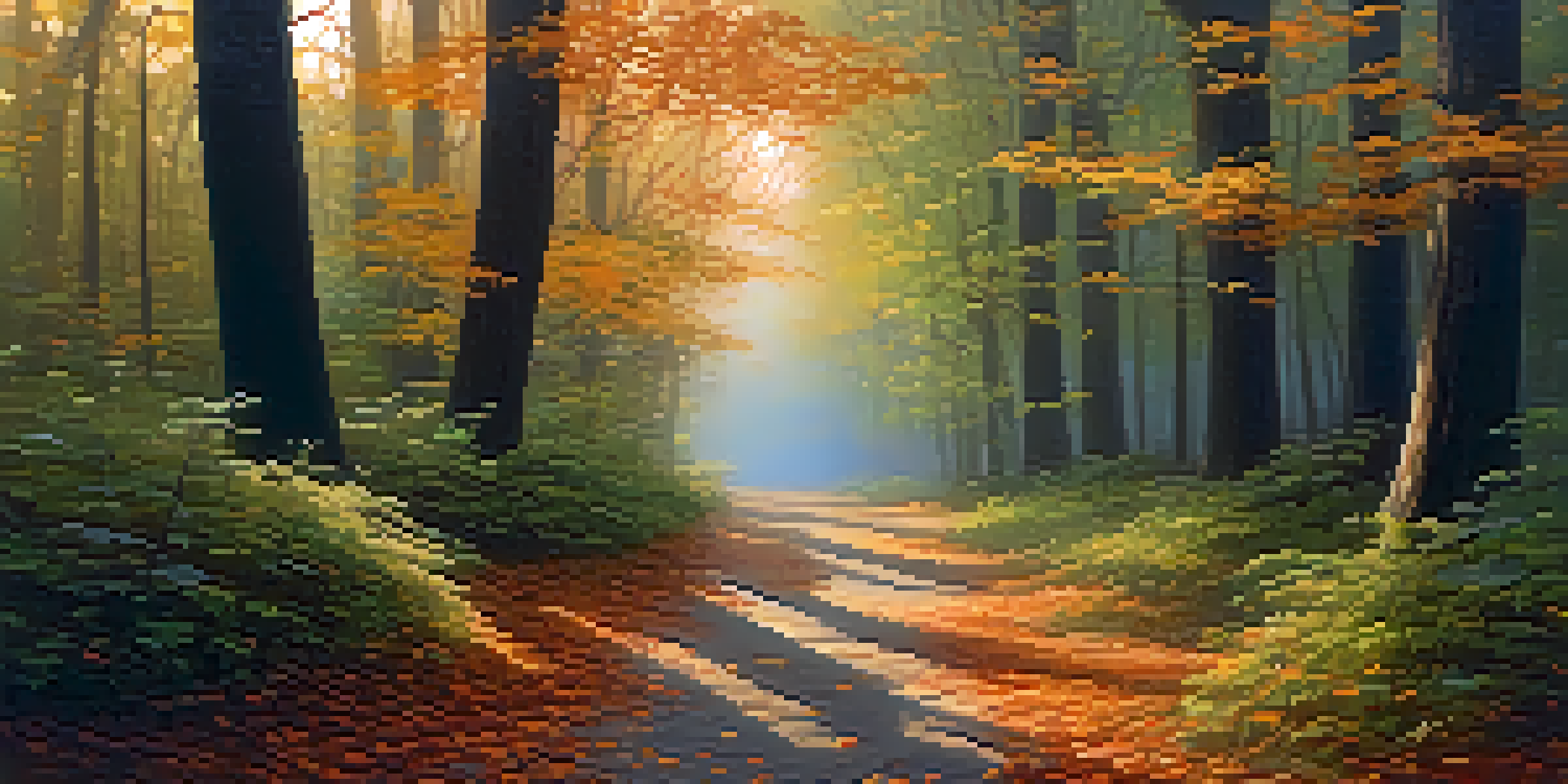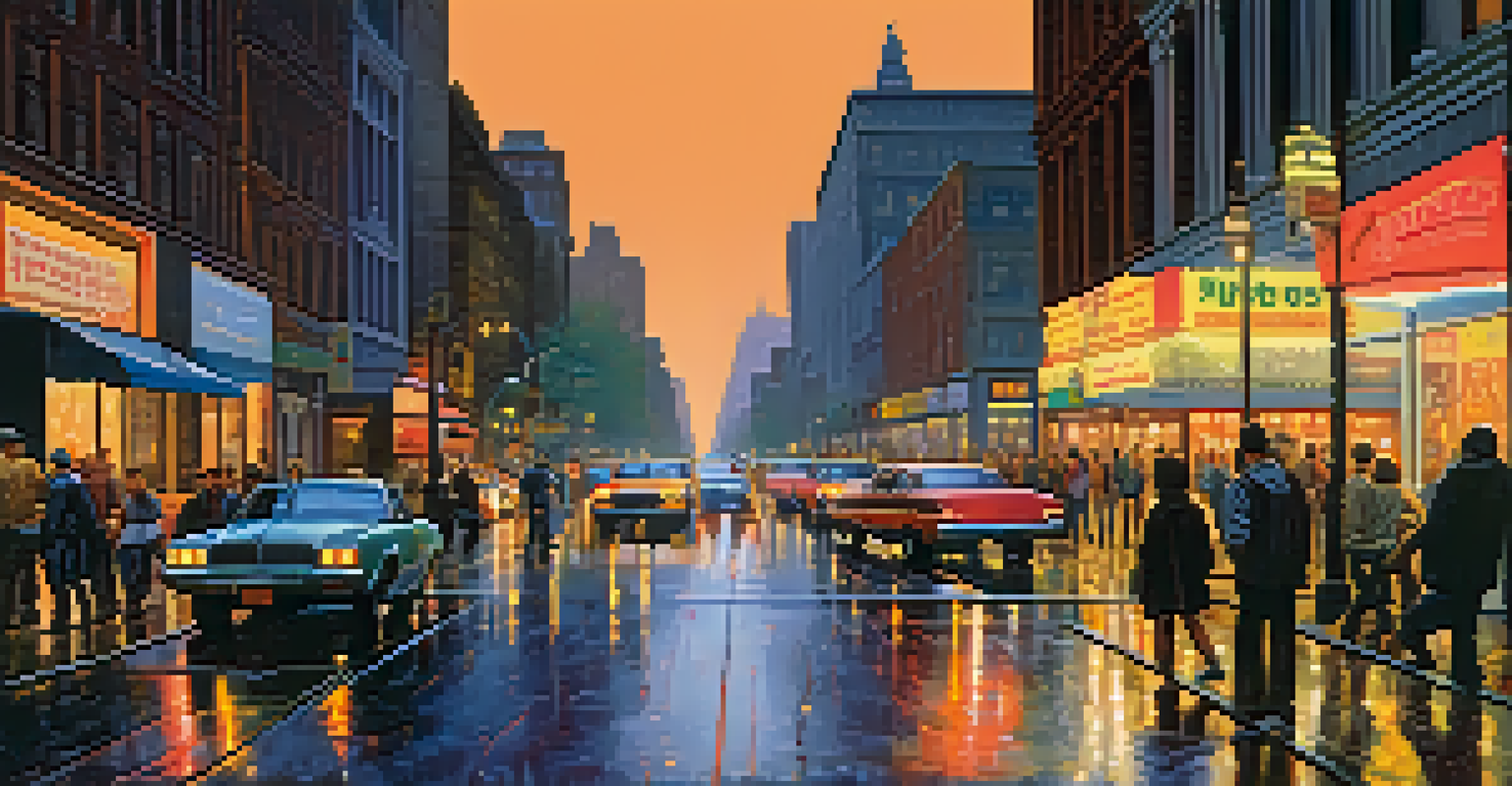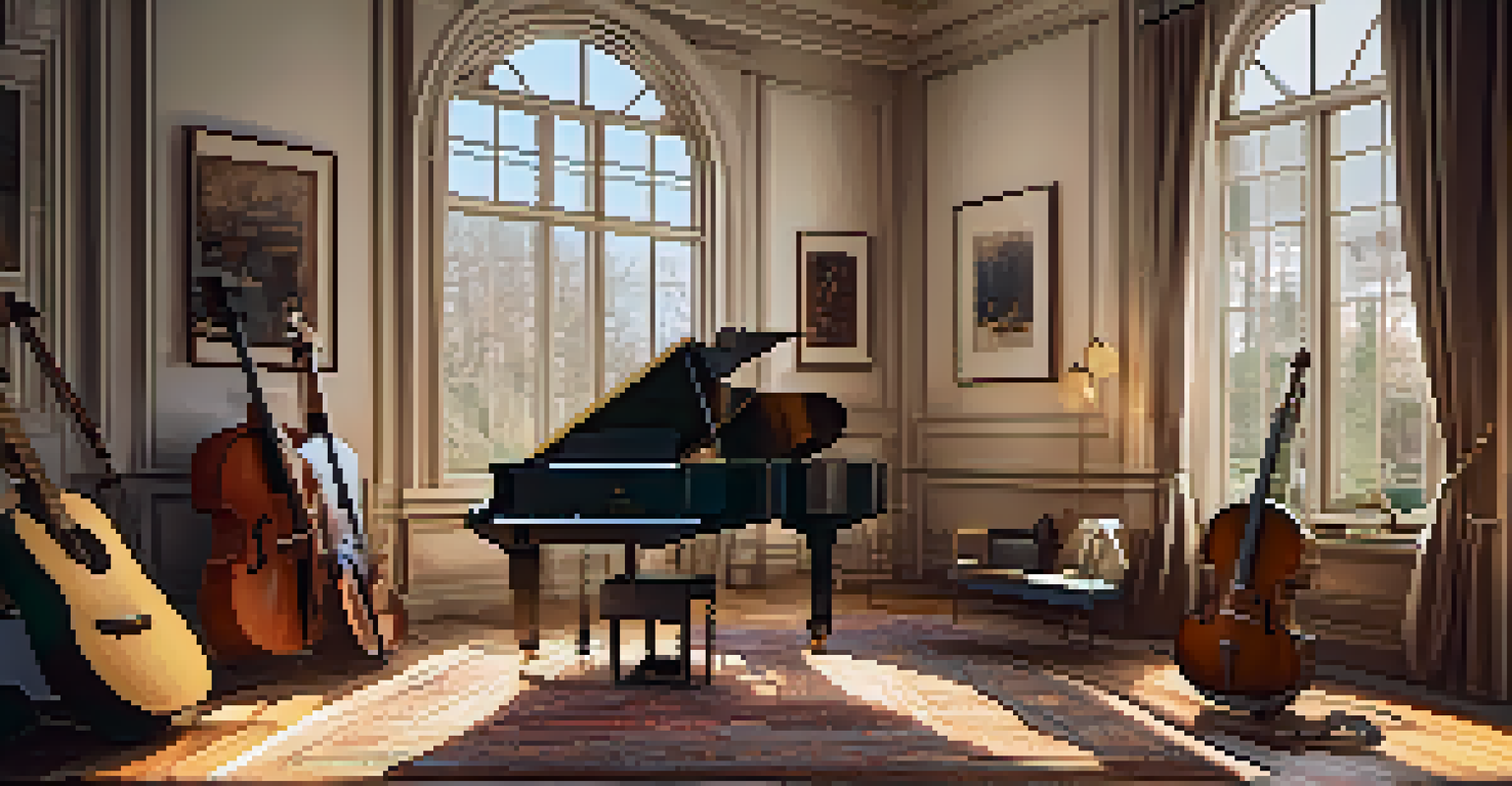Understanding the Art of Sound Design in Modern Films

What is Sound Design and Why It Matters in Film
Sound design is the art of creating audio elements that enhance storytelling in films. It encompasses everything from dialogue and sound effects to music and ambient sounds. This crucial aspect of filmmaking helps evoke emotions and immerse the audience in the narrative.
Sound is the half of the picture.
Consider how a horror film becomes more chilling with the subtle creaks of a door or the distant whisper of wind. These sounds create an atmosphere that visuals alone often cannot achieve. By manipulating sound, filmmakers can guide viewers' emotions and reactions.
Ultimately, sound design transforms a movie from a visual-only experience into a multi-sensory journey. It’s an invisible character that shapes our perception and engagement with the story. Without it, the cinematic experience would be less impactful.
The Key Elements of Sound Design in Films
Sound design relies on several key elements, including dialogue, sound effects, foley, and music. Dialogue is the backbone of storytelling, allowing characters to communicate and express emotions. However, sound effects and foley—re-created sounds of everyday actions—bring scenes to life, adding realism.

For instance, imagine a bustling city scene: the honking of cars, chatter of pedestrians, and distant sirens all contribute to the atmosphere. These elements work together to create an immersive environment that feels authentic and relatable. Each sound has a purpose and a place.
Sound Design Enhances Storytelling
Sound design is crucial in film as it creates audio elements that evoke emotions and immerse audiences in the narrative.
Music, on the other hand, sets the emotional tone of a film. Whether it’s a sweeping orchestral score or a haunting melody, music can elevate a scene, instilling feelings of joy, sadness, or tension. Together, these elements combine to create a rich soundscape that enhances the overall viewing experience.
The Role of Foley Artists in Creating Soundscapes
Foley artists play a vital role in sound design by recreating everyday sounds that enhance the film. They meticulously record sounds such as footsteps, rustling clothes, or clinking glasses in a studio setting. This attention to detail ensures that the audio matches the visuals perfectly.
The sound design is where the magic happens.
Imagine watching a film where a character walks through a forest. The crunch of leaves underfoot is often added later by a foley artist who mimics the sound in sync with the action on screen. This process helps create a sense of realism, allowing viewers to feel more connected to the story.
Additionally, foley artists use creative techniques to produce sounds that may not be easily captured during filming. This can involve using unconventional objects to replicate certain noises, adding a unique layer to the sound design. Their work is essential for making every scene believable and engaging.
The Impact of Sound on Audience Emotion and Engagement
Sound has a profound impact on how audiences experience films. It can heighten tension, evoke nostalgia, or even trigger fear, all depending on the sound elements used. For example, a sudden loud noise can make viewers jump, while a soft, melancholic tune can bring tears to their eyes.
Think of iconic moments in film history—like the eerie score in 'Jaws' that signals the presence of danger. These sound cues prepare the audience for what’s to come, creating anticipation and emotional investment. The right sound can leave a lasting impression long after the credits roll.
Foley Artists Bring Realism to Films
Foley artists meticulously recreate everyday sounds to enhance the film's audio, ensuring that it aligns perfectly with the visuals.
Moreover, filmmakers often use sound to manipulate pacing, drawing audiences deeper into the narrative. By carefully timing sound effects or music, they can control the rhythm of a scene, enhancing tension or providing relief. This orchestration of sound is essential in crafting a compelling cinematic experience.
The Evolution of Sound Design in Modern Filmmaking
Sound design has evolved significantly over the decades, particularly with technological advancements. From the early days of silent films, where intertitles and live music were essential, to today’s intricately layered soundscapes, the journey has been fascinating. Technology has opened up new possibilities for sound manipulation and creation.
Digital audio workstations allow sound designers to experiment with various sounds and effects like never before. This evolution means that filmmakers can achieve more complex soundscapes that enhance storytelling. For example, spatial audio techniques create an immersive experience that envelops the audience, making them feel as if they are part of the film.
As sound design continues to develop, it pushes the boundaries of creativity in filmmaking. Innovative approaches, such as the use of virtual reality soundscapes, are changing how stories are told. The future of sound design promises to be as exciting as it is essential to modern cinema.
Challenges Faced by Sound Designers in Film Production
Sound designers face several challenges during film production, including time constraints and the need for seamless integration with visuals. Creating a cohesive sound experience requires collaboration with directors, editors, and other departments, which can sometimes lead to conflicting visions. Balancing artistic intent with practical limitations can be tricky.
Additionally, sound designers must consider the acoustics of different environments where filming takes place. Outdoor locations, for example, can introduce unpredictable noise, making it difficult to capture clean audio. This often necessitates additional post-production work, which can be both time-consuming and costly.
Future Innovations in Sound Design
Advancements in technology, like AI and immersive formats, are reshaping sound design, offering new storytelling opportunities in filmmaking.
Despite these challenges, sound designers remain dedicated to their craft, often finding innovative solutions to overcome obstacles. Their ability to adapt and think creatively ultimately enhances the final product, making their contributions invaluable to the filmmaking process.
The Future of Sound Design in the Film Industry
As technology continues to advance, the future of sound design in filmmaking looks promising. Innovations in audio technology, such as artificial intelligence and machine learning, are beginning to play a role in sound creation and editing. These advancements could streamline processes and enhance creativity, allowing sound designers to focus more on artistic expression.
Moreover, immersive experiences like augmented and virtual reality are reshaping how sound is utilized in storytelling. Sound design will need to adapt to these new formats, offering audiences a more engaging and interactive experience. The potential for spatial audio will redefine how viewers perceive sound in relation to visuals.

In conclusion, the future of sound design is not only about improving techniques but also about exploring new storytelling avenues. As filmmakers and sound designers continue to collaborate and innovate, we can expect more captivating and memorable cinematic experiences that resonate with audiences on a deeper level.